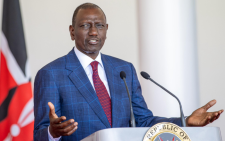816,000 jobs created last year, most in informal sector – KNBS

The economy generated 816,600 new jobs despite the slowdown in 2022 due to prolonged drought and political uncertainties.
During that period, the informal sector dominance was visible as a large portion of the workforce was engaged in the informal sector, which includes self-employment and casual labour.
Out of the 19.1 million people in the labour force, about 16 million worked in Micro, Small and Medium Enterprises (MSMEs) in 2022.
“Effectively, the MSME economy is one of the major sources of employment creation and income generation for the bulk of Kenyans. As the Kenya Kwanza administration committed itself, it will continue to address the plight of these businesses,” Treasury Cabinet Secretary Njuguna Ndung’u said during the launch of the KNBS economic survey report yesterday.
Poor rains and political uncertainties played a major part in the decline in job creation as Kenya was engaged in a hotly contested election which negatively affected the economy and deterred foreign investment.
During that period, job opportunities created by the private sector decreased to about 94,500 last year compared to 125,000 jobs in 2021. The KNBS survey estimates that the share of private sector employment to the total employment stood at 65.8 per cent compared to 63.9 per cent recorded in 2021.
Industries that provided top wage employment in the private sector were manufacturing, agriculture, forestry, fishing, wholesale and retail trade and repair of motor vehicles accounting for 15.9, 14.4 and 12.8 per cent of the total private sector employment, respectively.
Cheap imports
The fastest growth was realised in the accommodation and food service activities which saw a 23 per cent increase in employment between 2021 and 2022.
“A lower growth was realised in the agriculture, forestry and fishing industries at 1.5 per cent in 2022 compared to 5.2 per cent realised in 2021. This could be partly attributable to prolonged drought experienced which had a direct impact on the agriculture sector reflecting decelerated growth in employment in 2022,” says the KNBS report.
The manufacturing sector recorded a growth of 5.1 per cent in 2022 compared to 6.7 per cent in 2021, which is partly attributable to competition from cheap imports.
Accommodation and food service activities recorded the highest growth in employment at 23.0 per cent. This was followed by administrative and support service activities, water supply, sewerage, waste management and remediation activities, and education which registered a growth of 10.3, 8.8 and 7.9 per cent, respectively.
In the public sector, wage employment registered a 1.6 per cent growth in 2022 compared to an increase of 4.4 per cent recorded in 2021.
Leading activities with the highest employment levels in the public sector were education, public administration and defence, compulsory social security which accounted for 42.8 per cent and 35.7 per cent of total employment in the sector, respectively.
“Transport and storage activities recorded the highest growth of 12.6 per cent mainly spurred by growth in rail transport,” says KNBS.
Human health and social work activities recorded a growth of 7.4 per cent.








